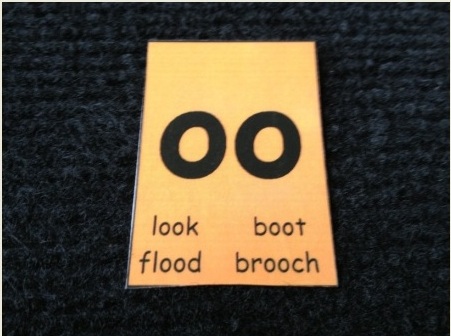How English spelling works
1 Replies
To celebrate the start of 2013 school year, I've made a little video on YouTube which gives a conceptual overview of the English spelling system.
This is a version of a pep talk I often give to older struggling learners, with three aims:
1. To reassure them that there's a good reason why they're struggling – the English spelling system is complicated,
2. To reassure them that there are learnable patterns and order in the apparent chaos of the English spelling system, they just need it broken down into small, digestible pieces and then to work through it in a systematic way, as many learners do. We discuss whether they've ever had literacy presented to them in this way before, and find they usually haven't.
3. To get their heads around some of the key ideas of the English spelling system, like:
- Sounds having to share letters because there aren't enough letters to go around,
- Words coming from many different languages, so that often one spelling has a few sounds, and
- Up to four letters (caught, eight, drought, straight) being able to work together to represent a single sound.
The video runs for about 15 minutes, and again it was put together by my wonderful sister Cath (thanks, Cath!).
Disgruntled, skeptical learners need straightforward, accurate information
The movable alphabet in the video can be downloaded from this website's shop, and I find it an indispensible tool in demonstrating English spelling patterns to learners, and reassuring them that while the English spelling system is complex, it's far from random.
The small words on the bottom of each piece are really useful for confirming that each spelling represents a finite number of sounds e.g. when building "cash-mash-mush-rush", if your learner makes "push" (uh-oh, different "u" sound), you just point to the second of the little words on the bottom of the "u" spelling (cut, put, tuna, truth) and say "oh in this word, this letter sounds like it does in the word "put". There are a few other words like that too, pull, full, bull, bush, we'll learn them later on".
No problem, you clearly have a handle on every English spelling variation, and a plan for teaching it.
Most of the learners I work with have seen enough of the English spelling system to know that there are exceptions to every rule, and a lot of quite weird spellings out there, so there's no point dumbing this discussion down for them.
In fact, doing so can really backfire, because sensitive learners really, really need to hear that they're not stupid – the English spelling system and they just haven't been taught it the right way yet.
Learners are usually hooked by the time you get to that word, "yet". So here's your chance to get them in a headlock and say "Now we're going to sort this out and get you reading and writing, OK? But you have to do the work every day, no excuses, OK?" and the answer is usually a wide-eyed "yes". And they mean it (they still sometimes don't do the work, but kids are kids, and we grown-ups just keep on nagging).
Treating English spelling like Lego
A lot of the struggling learners I work with have speech-language difficulties as well as literacy difficulties, so they really benefit from visual teaching strategies. They tend to be good at puzzles, building, drawing and so on, but not so great at conversations or understanding long verbal explanations.
Learners like this really benefit from treating English spelling like Lego – there are a whole lot of building blocks called spellings, and we're going to learn a few at a time, and put them together and see what words we can make. We'll start with little words, and learn how to put them together and pull them apart, and which bits fit with which other bits, and we'll go through and learn all the pieces till you can spell even long and tricky words.
This usually puts learners in a good frame of mind to start work, so it's time to dive on in and start building and reading and writing some words. Ideally, if you're not an expert yourself, you have support/advice from an expert, but if you don't/while you organise this, you can use my spelling tests to help you figure out what your learner can do, and what they need to work on.
OK, enough. Here's the video, hope you like it.



[…] two, three and four-letter spellings, or with spellings shared by more than one sound (see this earlier blog post for more […]